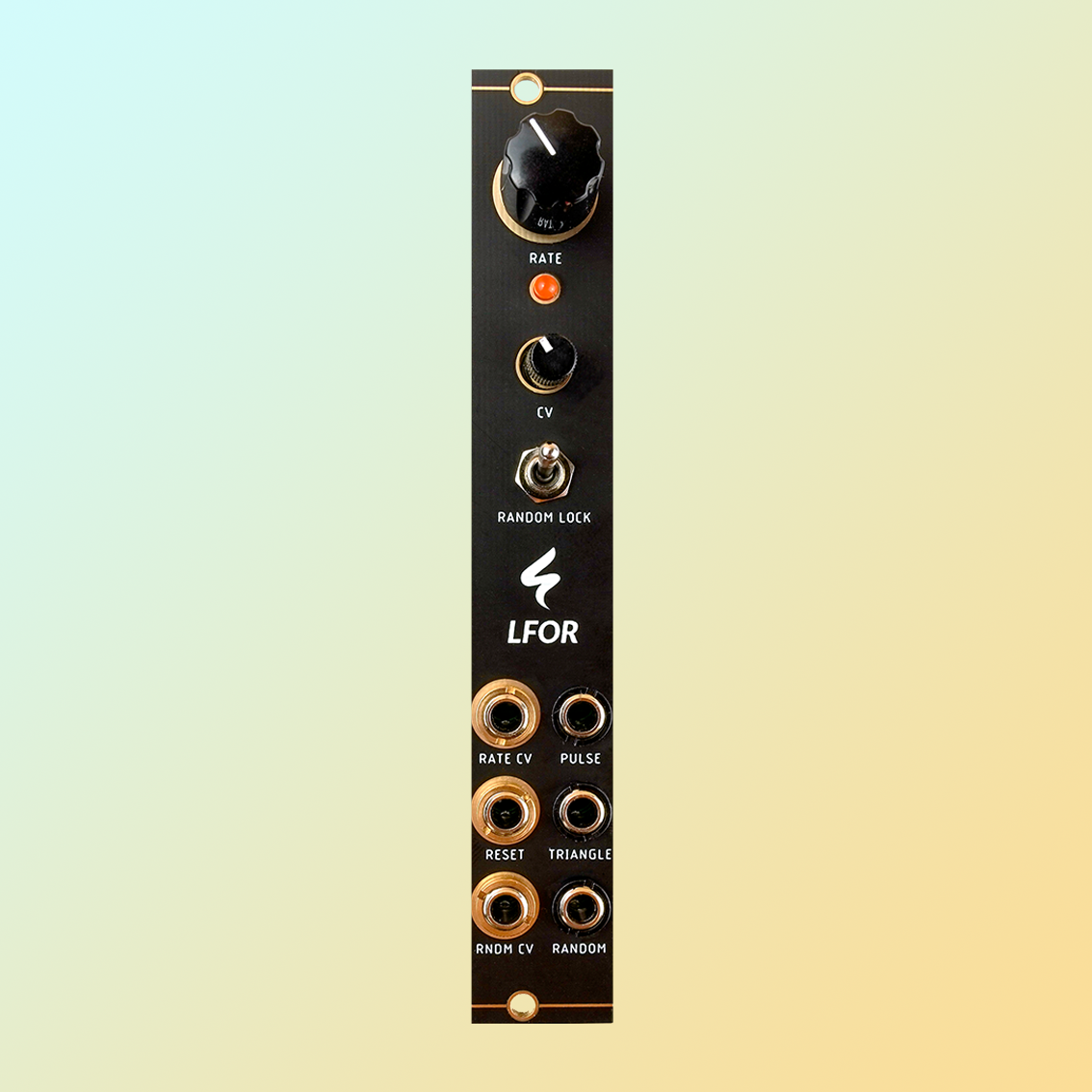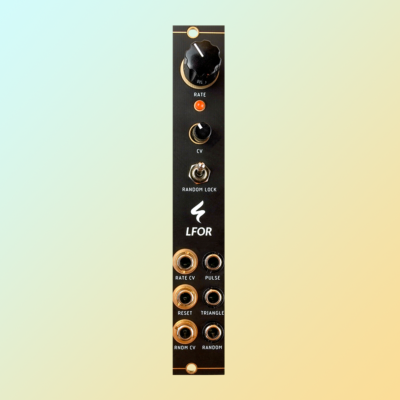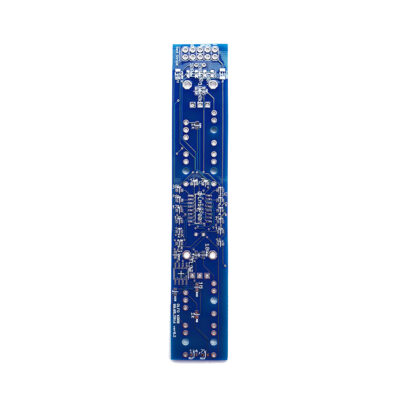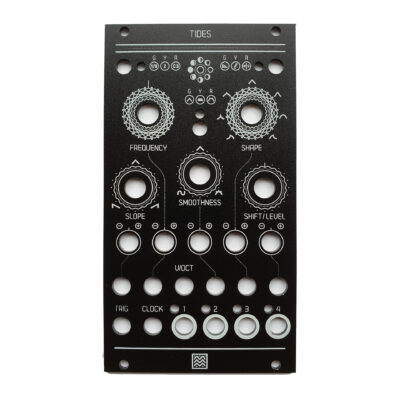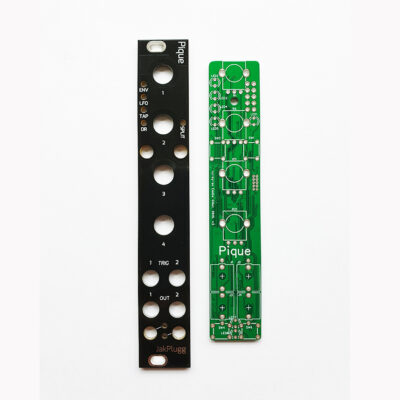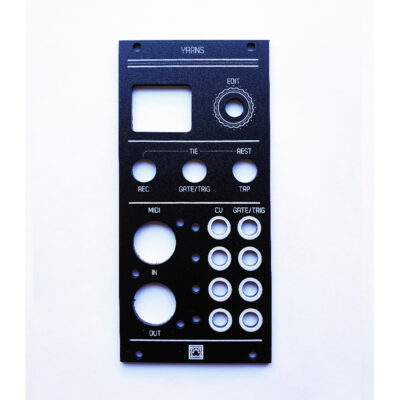Description
Digital LFO and Stepped Random Generator
The LFO provides three voltages in shape of Pulse, Triangle and Random. It can be used as a voltage and trigger source.
The frequency of the LFO can be changed using the Rate potentiometer on top. The LED is indicating the current speed. The Rate of the LFO may be voltage controlled using the Rate CV jack. The small potentiometer acts as an attenuator. Additionally the LFO cycle can be reset via a trigger signal at the Reset jack.
The Triangle output provides a standard triangle waveform. Random supplies a randomly stepped voltage at LFO rate. This random voltage is normalized to the LFO CV in creating some interesting random voltages on the other outputs. This connection can be interrupted by inserting a patch cable to Rate CV. Using the Random Lock Switch it is possible to lock the random steps to identical patterns of 16 (mid position) or 8 (down position) steps. If the switch is positioned upwards it is completely random. Patching a voltage to RNDM CV will give you CV control of the Random Lock (switch must be in mid position). Any voltage above 3 volts will produce random steps, any voltage below 4 volts will lock the random out to a pattern of 8 steps.
Pulse out is not a typical pulse wave you would expect from an LFO. It is rather a rhythmical trigger producing one long pulse at the start of the cycle and a short pulse at the end. This way and by the normalized random voltage (if the CV attenuator is turned clockwise), you will have a wide range of random or locked pulses to trigger VCAs or sequencers.
Details:
• LFO with 3 Waveforms
• Triangle, Pulse and Stepped Random
• LFO Rate potentiometer
• Voltage Control over Rate
• LFO Reset
• Stepped Random lockable to 16 or 8 steps
• Random Voltages normalized to LFO Rate
• Pulse can act as Rythm Generator
• Wrong polarity protection
• Skiff friendly
• 3U Eurorack module, 4 HP wide
• Power consumption: 25 mA at +12 V and 20 mA at -12 V
- 25 mA +12V
- 20 mA -12V
- 0 mA 5V
- 30 mm deep
